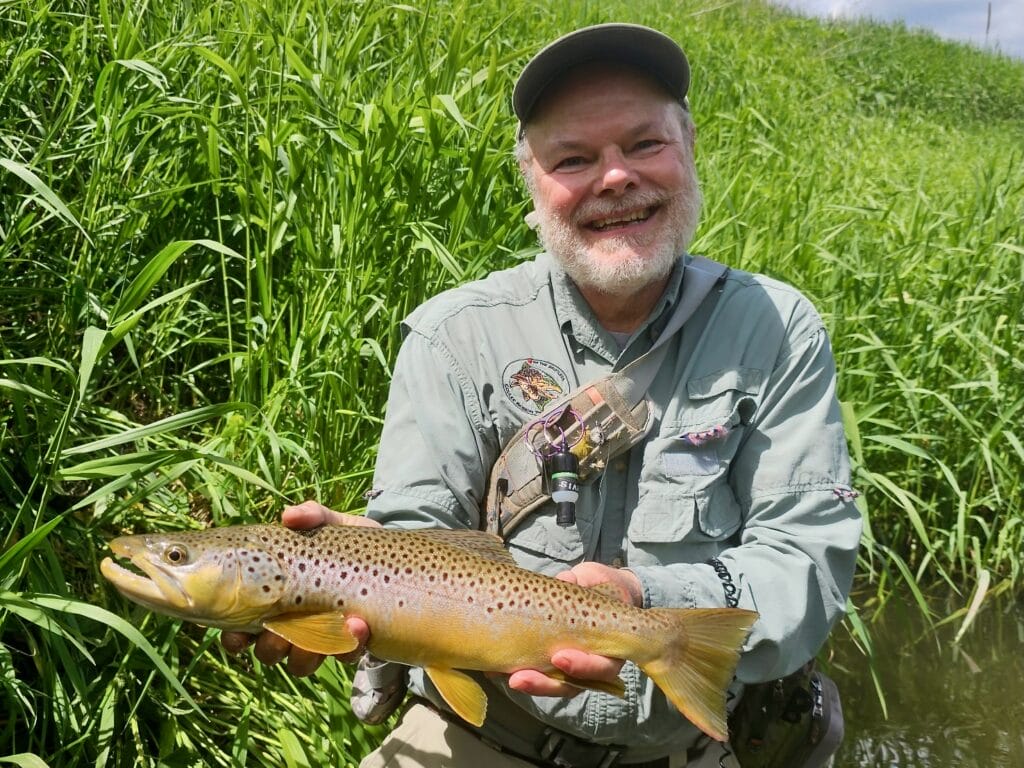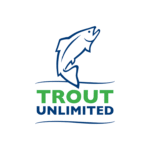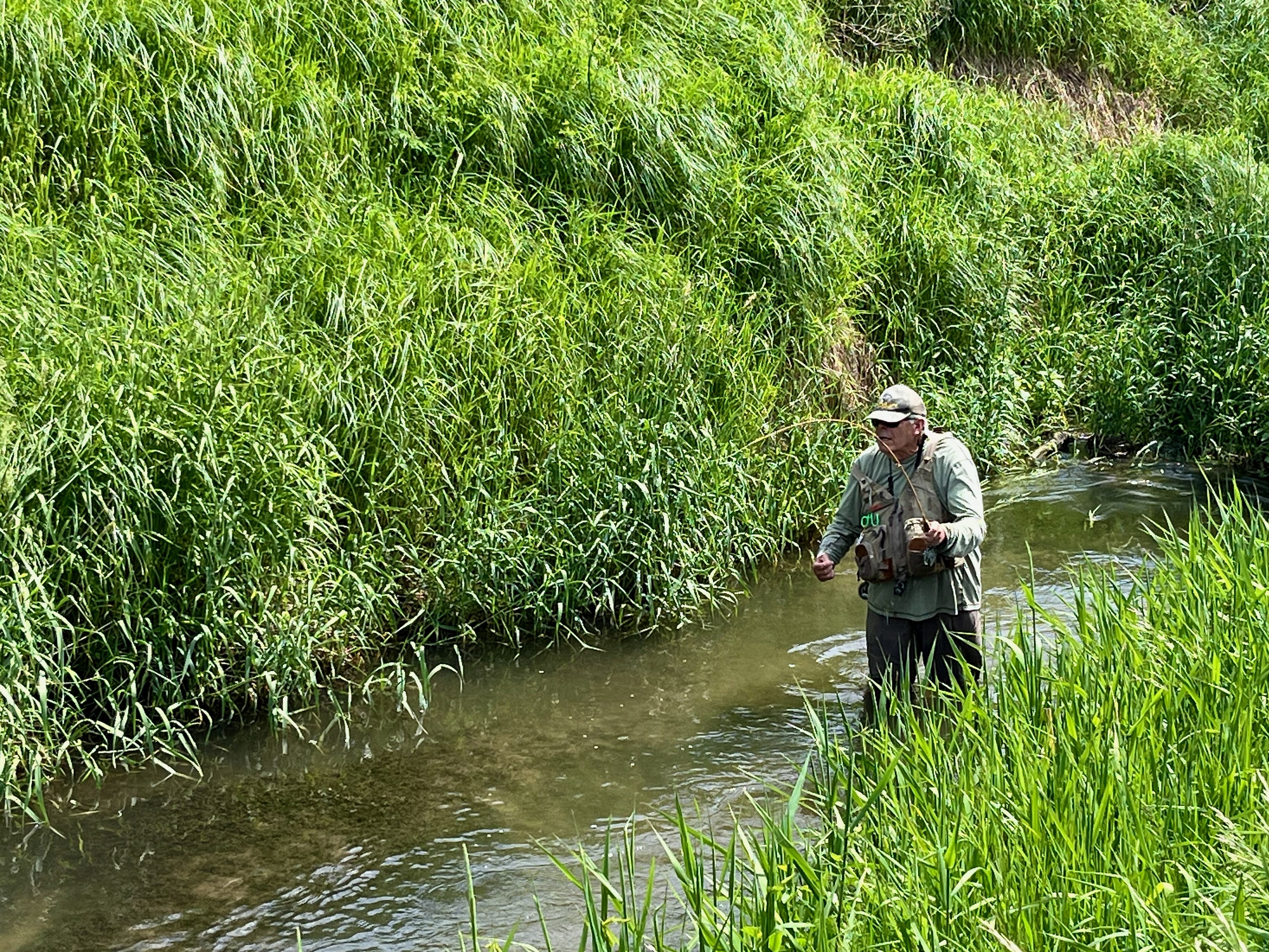Because fishing time is so precious, I am a reluctant explorer. I know fishing is supposed to be about more than catching fish, but let’s face it, I like to catch fish. And so I tend to go to spots that have been good to me in the past.
I am an especially reluctant explorer when it comes to fishing unimproved water in the Driftless. The thought of sloshing through long-featureless stretches of stream with sand and muck bottom doesn’t make me tingle with anticipation.
But this year I have made it a point to stop at bridges far from public access signs and fish portions of streams I have never fished before, and it has been a bit of a revelation. These stretches of water hold fish, and in some cases lots of fish and some very big fish.

Unimproved water offers both solitude while fishing and the opportunity to make personal connections with landowners. Through exploring the unimproved water, I have expanded my fishing opportunities without increasing my drive times. All my familiar streams seem bigger to me, and cultivating a bit of curiosity about the mysteries that lie beyond the next bend is not such a bad thing.
Yes, there can be long stretches of stream that are barren and mucky, and sometimes the banks can be insanely high and steep. But mucky stretches of barren water are not the only thing that exists between the public access signs on your favorite trout streams.
If the prevailing agricultural practices are solid in a watershed, even degraded streams will begin to heal themselves through the miracle of their hydrologic processes if we give them half a chance. Riffles, scour holes, undercut banks, meanders, woody cover and deep pools are great places to fish, whether they were created by a habitat project or fluvial geomorphology (basically how running water and land physically interact).
To fish unimproved water successfully, I have found I need to adjust some of the ways I read water while fishing. Good natural habitat is often more subtle than habitat features made by humans.
Undercut banks are a great example. I have been a bit shocked by the size of trout I have pulled out of undercut banks that looked too insignificant to hold sizeable fish. But when I examine these undercuts more closely, I notice the submerged roots of the deeply rooted turf at the stream edge create fantastic ledges, almost like a micro lunker structure.
One benefit of fishing unimproved water is that fish are often less wary, but this is not always the case.
Recently Duke Welter and I fished a stretch of a stream that must not be named, and found ourselves in one of those long, slow, mucky, “featureless” sections of stream I dread. It didn’t look like much to us, but the fish totally disagreed. There were fish everywhere! The banks and every dark spot and subtle variation on the stream bottom held trout. How do I know? Well, it sure wasn’t because we were catching any.
Every time one of us threw a fly on the glassy smooth water, all we would see were puffs of silt that reminded me of the exploding flak in the sky surrounding the B-17s in a World War II documentary. Sometimes the clouds of silt created by the herd of fish we were spooking upstream were so huge it was comical.
I feel like both of us have a decent grasp of how to be stealthy on a stream, and we tried everything we knew how to try. But we didn’t start catching fish until we got to a section with more slope and more defined current.
So many fish. So many exploding puffs of silt. I guess I learned that I can be humbled by a trout just as easily out in the middle of nowhere, as I can be on Timber Coulee or the Rush River. Distance from a public access sign does not always equate to easy-to-catch fish. But I have made a mental note to return to this spot during hopper season when the fish lose their minds a little bit, and then we’ll see who’s boss.
If you enter a stream at a public access point like a bridge on a public road, Wisconsin law grants you the right to walk in streams on private land without permission as long as you keep your feet wet. But exercise this right wisely. Landowners on unimproved sections without a public easement may not be accustomed to seeing many anglers on their property, so etiquette is very important.
Always, and I mean always, ask for landowner permission if you want to walk across private land, walk along the field edge of a riparian corridor or park at a stream crossing on a private field road. Anglers do not have the right to do any of these things without permission.
Asking landowners for permission to fish on their property can be a bit intimidating, but landowners are frequently accommodating. This also helps anglers and farmers form connections with each other. Don’t litter, try to take a selfie with a bull, block a farmer’s field access with your vehicle, leave closed gates open or do other dumb things. I know I sound a bit stern here, but one bad experience can really sour a landowner.
Overall, your fishing risk-reward ratio is greater on unimproved water compared to areas with habitat improvement. I encourage you not to overlook unimproved stream stretches, especially on weekends and other times you see multiple cars parked along popular stretches of streams. Your local Driftless streams hold way more great fishing opportunities than you might think.



